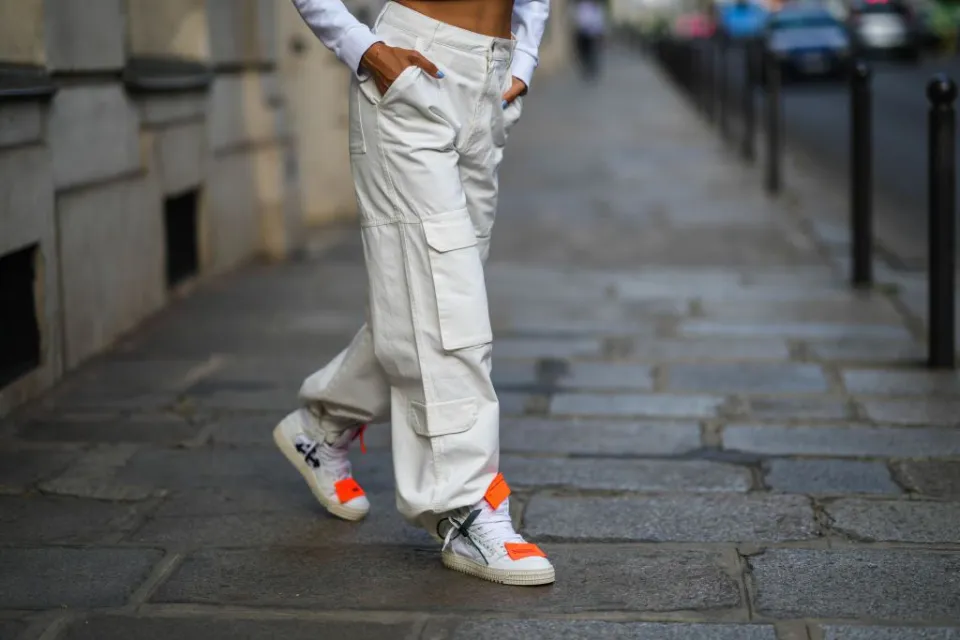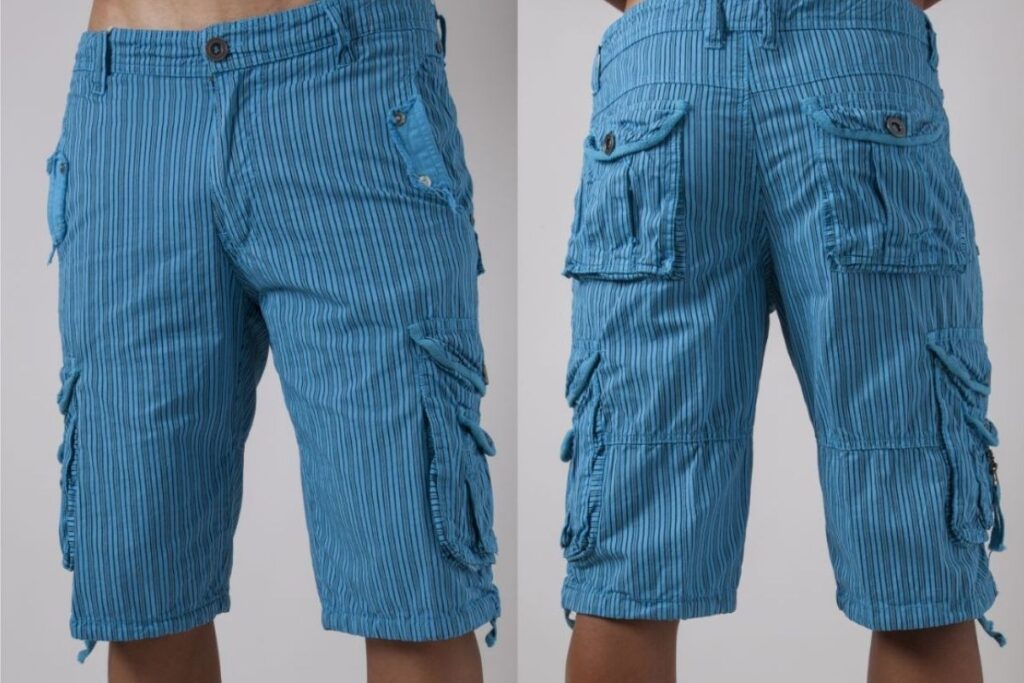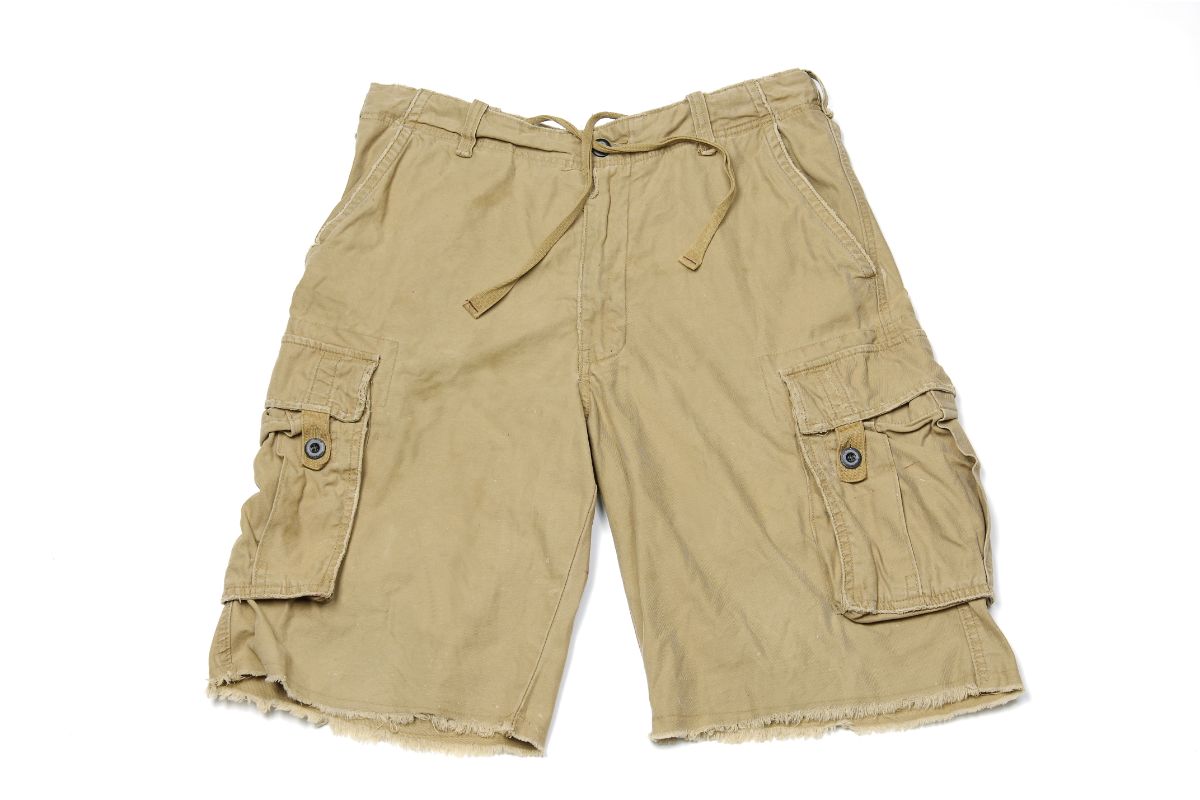Are cargo shorts business casual? The answer isn’t a simple yes or no. Business casual dress codes vary wildly across industries and even individual workplaces. While cargo shorts might be acceptable in some relaxed startup environments, they’re generally considered too informal for most corporate settings. This exploration delves into the nuances of business casual attire, analyzing the characteristics of cargo shorts and exploring alternative, more appropriate options for professional settings.
We’ll examine the factors influencing perceptions of professional dress, including personal grooming and the overall context of the workplace. We’ll also provide a framework for navigating ambiguous dress codes and making informed choices about what to wear to work, ensuring you present a professional image while remaining comfortable and confident.
Defining “Business Casual”

Business casual is a dress code that aims to strike a balance between professional and relaxed attire. However, its interpretation varies significantly depending on industry, company culture, and even individual workplace norms. Understanding the nuances of business casual is crucial for making appropriate clothing choices and projecting a professional image.
The spectrum of business casual dress codes is broad. In some industries, such as technology or creative fields, business casual might lean towards a more relaxed interpretation, while in finance or law, the standard tends to be more conservative and closer to traditional business attire. This difference reflects the varying expectations of professionalism within each sector. A software engineer might wear clean jeans and a polo shirt, while a lawyer might opt for khakis, a button-down shirt, and a blazer.
Acceptable Business Casual Attire
Acceptable business casual attire varies widely depending on the specific workplace. Generally, it involves avoiding overly casual items such as jeans (unless specifically permitted), t-shirts, athletic wear, and flip-flops. Instead, appropriate choices might include:
For Men:
- Khakis or dress pants
- Button-down shirts (long or short-sleeved)
- Polos (in neutral colors)
- Blazers or sport coats (optional, depending on the workplace)
- Clean, polished loafers or oxfords
For Women:
- Dress pants or skirts (knee-length or longer)
- Blouses or button-down shirts
- Sweaters or cardigans
- Dressy flats, loafers, or heels
- Neat dresses (depending on the workplace)
Factors Influencing Business Casual Interpretation
Several factors influence how business casual is interpreted and applied. Company culture plays a significant role, with some companies having a more relaxed atmosphere than others. The specific role of an individual within a company can also affect expectations. Senior management might be expected to dress more formally than entry-level employees. The geographical location and even the season can also impact what is considered appropriate. For example, what is considered acceptable business casual in a warm climate might differ from what is considered appropriate in a colder region.
International Business Casual Guidelines
Interpretations of business casual vary across cultures and countries. What is considered appropriate in one country might be deemed too casual or too formal in another. The following table provides a simplified comparison, acknowledging that significant regional and company-specific variations exist.
| Country | General Tendency | Examples (Men) | Examples (Women) |
|---|---|---|---|
| United States | Moderate to Relaxed | Khakis, button-down shirt, loafers | Dress pants or skirt, blouse, flats |
| United Kingdom | More Formal | Chinos, tailored shirt, smart shoes | Tailored trousers or skirt, blouse or smart top, heels or smart flats |
| Japan | Formal | Dress pants, button-down shirt, tie (often preferred) | Dress pantsuit or skirt suit |
| Germany | Moderate | Chinos or dress pants, button-down shirt, loafers or oxfords | Dress pants or skirt, blouse, flats or low heels |
Analyzing Cargo Shorts

Cargo shorts, a staple in casual wardrobes, are characterized by their multiple large pockets, typically positioned on the sides and/or legs. This distinctive feature, along with their relaxed fit, sets them apart from other short styles. Understanding their characteristics, appropriateness, and potential drawbacks is crucial when considering their place in a business casual context.
Cargo shorts typically utilize durable fabrics like cotton twill, canvas, or blends incorporating polyester for added durability and wrinkle resistance. Styles range from classic military-inspired designs to more modern interpretations with slimmer fits and varied pocket configurations. The signature feature, however, remains the abundance of pockets, often flap-covered for added security.
Cargo Shorts Compared to Other Shorts
Chino shorts, often made from a cotton twill fabric, offer a more refined and structured appearance compared to cargo shorts. They typically feature a cleaner, less cluttered aesthetic with fewer, smaller pockets. Linen shorts, on the other hand, prioritize breathability and a relaxed, summery feel. Linen’s inherent texture and drape create a distinct look, contrasting with the more utilitarian feel of cargo shorts. The differences in fabric, pocket design, and overall style significantly impact the perceived formality of each short type. Chino shorts lean towards a more polished look, while linen shorts are inherently casual. Cargo shorts fall somewhere in between, depending on the specific style and fabric.
Situations Where Cargo Shorts Might Be Appropriate, Are cargo shorts business casual
While generally considered casual, cargo shorts can find a place in certain informal business settings. For example, a startup with a relaxed dress code might allow cargo shorts in warmer climates, particularly if the fabric and style are relatively neat and not overly embellished. Similarly, outdoor-oriented businesses, such as landscaping companies or adventure tourism firms, may find them appropriate for work-related activities. The key is to assess the specific workplace culture and consider the overall impression the attire conveys.
Drawbacks of Cargo Shorts in a Professional Setting
The prominent pockets of cargo shorts, while functional, can be perceived as visually distracting and less polished in a professional context. The overall casual nature of cargo shorts typically clashes with the more refined expectations of most business casual environments. The choice of fabric also matters; while some fabrics may appear more appropriate, the inherent functionality and relaxed fit generally suggest a level of informality that might be deemed unprofessional in many office settings. Ultimately, the risk of appearing underdressed or lacking attention to detail outweighs the potential benefits in most traditional business settings.
Cargo Shorts in Specific Business Contexts: Are Cargo Shorts Business Casual

The appropriateness of cargo shorts in a business setting is highly dependent on the specific workplace culture and industry. While generally considered too casual for most corporate environments, their acceptability can vary significantly depending on factors such as company size, dress code, and the nature of the work.
The level of formality expected in the workplace directly influences the suitability of cargo shorts. A rigid corporate structure with a strict dress code will almost certainly prohibit them, while a more relaxed startup environment may offer more leeway. However, even within more lenient settings, careful consideration is always necessary to avoid appearing unprofessional.
Cargo Shorts in Startup vs. Corporate Environments
Startups often foster a more relaxed and informal atmosphere compared to established corporations. The emphasis is frequently on innovation and collaboration, sometimes leading to more lenient dress codes. However, even in a startup, the overall image projected to clients and investors remains crucial. While cargo shorts might be acceptable for internal team meetings or casual Fridays, they are generally unsuitable for client presentations or investor pitches. In contrast, corporate environments typically adhere to stricter dress codes, often requiring business professional or business casual attire. Cargo shorts would rarely, if ever, be appropriate in these settings. The potential for misinterpretations regarding professionalism and competence is significantly higher in more formal corporate settings.
Industries Where Cargo Shorts Might Be More Acceptable
Certain industries, due to their nature of work, might exhibit greater tolerance for cargo shorts than others. Outdoor-focused businesses, such as landscaping companies or adventure tourism operators, where practicality and functionality are paramount, may have a more relaxed approach to attire. Similarly, some creative industries, like design studios or advertising agencies known for their less formal culture, might also permit cargo shorts, particularly in less client-facing roles. However, it’s crucial to observe the prevailing dress norms within the specific company, even within these industries, as acceptance varies widely.
Hypothetical Scenario: Consequences of Wearing Cargo Shorts to a Business Meeting
Imagine a young entrepreneur, Alex, pitching their innovative tech startup to a panel of seasoned venture capitalists. Alex, confident in their product but less so in their attire choices, arrives for the crucial meeting wearing cargo shorts. The investors, accustomed to a certain level of professionalism, might subconsciously perceive Alex as less serious or prepared, potentially impacting their investment decision. The perceived lack of attention to detail in their attire could overshadow the merits of their groundbreaking technology. This scenario highlights how seemingly minor details, like clothing choices, can have significant consequences in professional settings.
Factors to Consider When Wearing Cargo Shorts to Work
Before deciding to wear cargo shorts to work, several factors must be carefully considered. These include the company’s dress code policy (explicit or implicit), the specific work environment and its level of formality, the nature of the day’s tasks (client meetings, presentations, or internal work), the overall image one wishes to project, and the prevailing workplace culture. A comprehensive assessment of these factors is crucial to ensure that clothing choices align with professional expectations and avoid potentially negative consequences.
Alternatives to Cargo Shorts
Cargo shorts, while offering ample storage, often fall short of business casual standards. Their utilitarian design can appear too informal for professional settings, even when paired with a crisp shirt. Fortunately, numerous alternatives provide both comfort and a polished look suitable for the workplace. This section explores viable options and demonstrates how to construct professional yet comfortable business casual outfits.
Several bottom options provide the balance of comfort and professionalism needed for business casual attire. The key is to choose pieces that are well-tailored, made from appropriate fabrics, and styled appropriately for the context of your workplace.
Suitable Alternatives for Business Casual Attire
The following list details alternative bottom options appropriate for business casual settings, emphasizing versatility and professional appearance. The choice will ultimately depend on individual preferences, workplace culture, and the specific occasion.
- Chinos: Chinos are a versatile and reliable choice. Their tailored fit and range of colors (from neutral beige and navy to more vibrant options) offer adaptability. They pair well with button-down shirts, polos, and even some sweaters, depending on the season.
- Dress Pants (in lighter fabrics): While traditionally associated with formal wear, lighter-weight dress pants in linen or cotton blends can be appropriate for business casual. Look for options in relaxed fits or softer fabrics to avoid overly stiff formality.
- Corduroy Pants (in subtle colors): Corduroy pants, particularly in muted colors like navy, brown, or olive green, can offer a sophisticated and comfortable alternative, especially during cooler months. Avoid brightly colored or heavily textured corduroy for a more professional look.
- Shorts (not cargo): Well-tailored shorts in neutral colors like navy or khaki, made from a breathable fabric like cotton twill or linen, can be appropriate for less formal business casual settings, particularly in warmer climates. Ensure they are above the knee and have a clean, simple design. Avoid distressed or overly casual styles.
Comparing Versatility and Professionalism of Different Pants and Shorts
The versatility and professionalism of various pants and shorts vary significantly. Chinos, for example, offer a high degree of versatility, easily transitioning between casual and more formal business casual settings. Dress pants, while more formal, can be adapted for business casual with the right fabric and fit. Shorts, on the other hand, require careful consideration, demanding a tailored fit and neutral color palette to maintain a professional appearance.
| Bottom Option | Versatility | Professionalism | Suitability for Business Casual |
|---|---|---|---|
| Chinos | High | Medium-High | Excellent |
| Dress Pants (lighter fabrics) | Medium | High | Good (depending on fabric and fit) |
| Corduroy Pants (subtle colors) | Medium | Medium-High | Good |
| Shorts (non-cargo) | Low | Low-Medium | Conditional (depending on style and context) |
Creating Professional Yet Comfortable Business Casual Outfits
Achieving a professional yet comfortable business casual look involves careful consideration of fabric, fit, and color coordination. The goal is to create outfits that are both appropriate for the workplace and comfortable enough for the workday. The following examples illustrate effective combinations.
Outfit Combinations
Outfit 1: A light blue linen button-down shirt, paired with beige chinos and brown leather loafers. This outfit is both professional and breathable, suitable for warmer weather.
Outfit 2: A navy cotton polo shirt, worn with navy corduroy pants and dark brown suede shoes. This combination is ideal for cooler weather, maintaining a sophisticated yet comfortable feel.
Outfit 3: A crisp white linen shirt, paired with tailored khaki shorts (above the knee) and clean white sneakers. This option is suitable for warmer climates and less formal business casual environments, provided the shorts are appropriately styled.
The Impact of Context and Personal Presentation
The appropriateness of cargo shorts in a business casual setting hinges not solely on the garment itself, but significantly on the wearer’s overall presentation and the specific context. A well-groomed individual with a polished presentation can often elevate even less conventional attire, while a sloppy appearance can detract from even the most meticulously chosen outfit. The interplay between clothing choice, personal grooming, and the environment is crucial in determining professional acceptability.
Personal grooming and overall presentation significantly influence how an outfit is perceived. Neat hair, clean nails, and well-maintained facial hair (if applicable) contribute to a professional image, regardless of the specific clothing items. A crisp, ironed shirt, even paired with cargo shorts, projects a more polished look than a wrinkled shirt and unkempt appearance. Similarly, polished shoes and clean socks complete the overall impression. The details matter; a well-maintained appearance demonstrates attention to detail and respect for the professional environment.
The Role of Accessories in Business Casual Attire
Accessories play a pivotal role in either enhancing or diminishing a business casual look, particularly when considering the potentially controversial cargo shorts. A high-quality leather belt, a tasteful watch, and subtle jewelry can elevate the overall impression, adding sophistication and polish. Conversely, excessive or inappropriate accessories can distract from the outfit and create a less professional image. For example, a flashy belt buckle or overly large jewelry pieces might clash with the relaxed nature of cargo shorts and create an incongruous look. Careful selection of accessories is essential for achieving a balanced and professional appearance.
Environmental and Occassional Influences on Clothing Choices
The appropriateness of cargo shorts varies dramatically depending on the environment and specific occasion. A relaxed tech startup might have a more lenient dress code, potentially allowing cargo shorts in certain situations. However, a formal client meeting or a presentation to senior management would likely require more traditional business attire. The formality of the event and the expectations of the audience must be considered. A company picnic, for instance, might be more forgiving of casual attire, while a corporate board meeting clearly necessitates more formal clothing. Understanding the cultural norms and expectations of the specific workplace is paramount.
Navigating Dress Code Ambiguity in the Workplace
When workplace dress codes are unclear or ambiguous, it’s best to err on the side of caution. Observing the attire of senior colleagues and managers can provide valuable insights into accepted norms. If there is doubt, it’s always advisable to ask a supervisor or HR representative for clarification. Directly addressing any uncertainty shows initiative and a commitment to professional standards. This proactive approach avoids potential misunderstandings and ensures compliance with company expectations. When in doubt, opting for more formal attire is generally a safer choice than pushing the boundaries of what might be considered acceptable.






